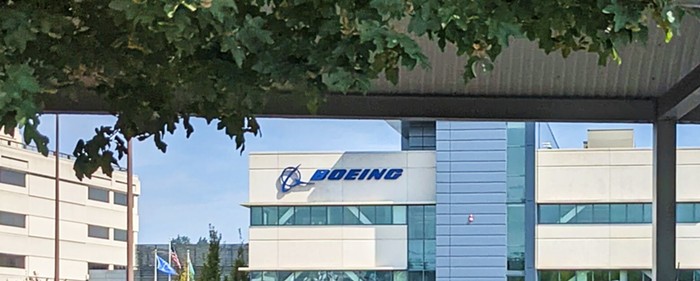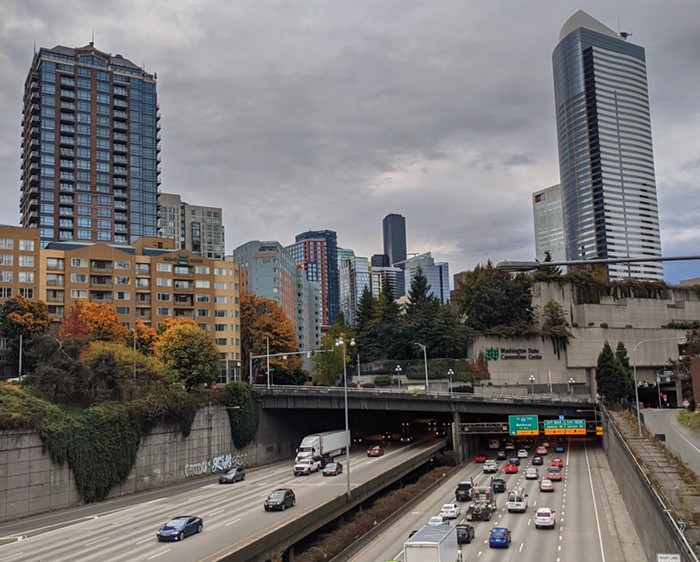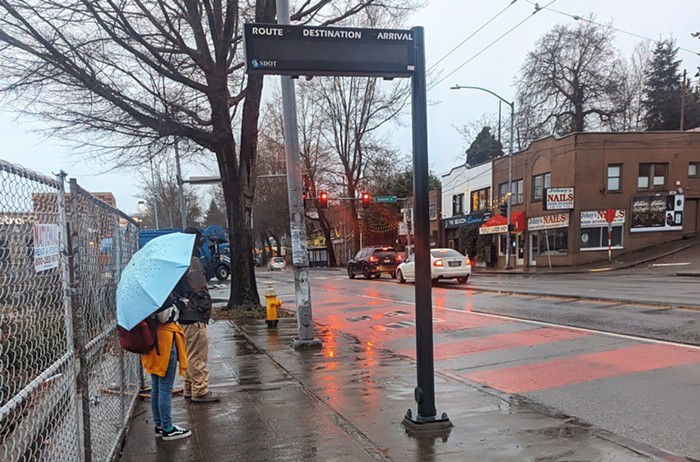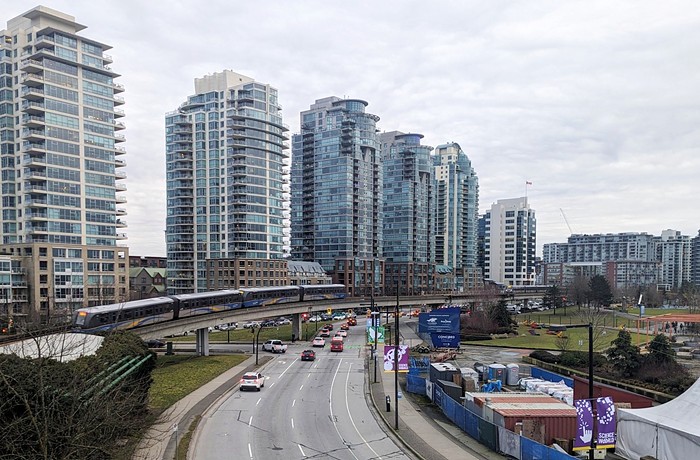
A car that hits a person tends to be in much better condition than one that hits a tree, like this one on Beacon Avenue. Charles Mudede
The news only gets worse for pedestrians. Not only does new data show a 10 percent increase in pedestrian fatalities in 2015 but they also accounted for nearly 15% of all car crash-related deaths (it was 11% a decade ago). The reason for the spike? Cars are becoming safer for drivers but are still as dangerous for pedestrians. There are more people walking about because, one, it's now generally recognized as a healthy thing to do and, two, the weather is warmer, thanks to climate change.
The report also blames smartphones. But as I said before, a distracted driver is not the same as a distracted pedestrian. There are also more cars on the road because of the cheapness of fuel and improvements in the economy. To make matters worse, Americans are, once again, losing interest in fuel-efficient cars.
Finally, what the data makes clear, and what the report fails to point out, is the reason why this crisis (cars killing walkers) is so urban. Though cities are becoming more about people (increased density and all of that), their laws and regulations continue to be about cars. We are not making laws that aggressively protect walkers. Our laws still, for the most part, punish them.



















